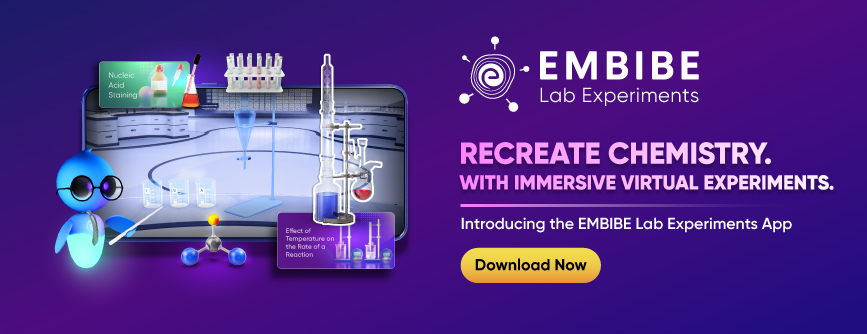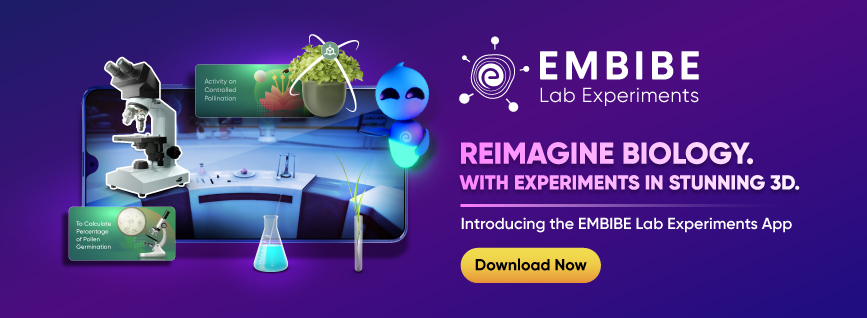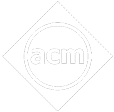- Written by aparna
- Last Modified on 28-03-2024
Andhra Pradesh Board Class 12 Exam 2024
The Andhra Pradesh Board of Intermediate Education (APBIE), conducts the higher secondary school board exams or the Class 12 exams for inter-school applicants. APBIE will tentatively hold the AP inter exam 2024 from March to April 2024. Students can download their AP Inter supplementary hall ticket 2024 by using their roll no/ previous hall ticket number for second-year students/Aadhar number, date of birth, and name, once they are released by the board.
APBIE provides a two-year intermediate education in general and vocational streams, with roughly 85 combinations/groups/courses in Science, Humanities, Commerce, and other professional streams. Vocational courses strengthen students’ skills to obtain immediate employment or pursue further technical education. General courses prepare students to pursue graduation in general and professional fields.
Andhra Pradesh Board Class 12 Exam Summary 2024
The APBIE conducts examinations for the first and second-year intermediate education students every year, in which millions of students appear. The results are generally released in April. Andhra Pradesh’s intermediate public examinations are divided into three phases:
- Examinations of social and environmental responsibility
- Practical examinations
- Theory examinations
Check out the table below to know all the important information about the 12th Andhra Pradesh Board exam:
| Conducting Authority |
Andhra Pradesh Board of Intermediate Education (APBIE) |
| Exam Type |
State Governmental Board of School Education |
| Exam Name |
12th Andhra Pradesh Board Exam |
| Commonly Known as |
APBIE |
| Founded In |
1971 |
| Headquarter |
Vijayawada, Andhra Pradesh |
| Address |
Besides SPNRCH High School.
Opp. Andhra Hospitals,
Gollapudi, Vijayawada,
Andhra Pradesh. Pin Code – 521225 |
| Exam Mode |
Offline |
| Frequency |
Annually |
| Exam Duration |
3 Hours |
| Exam Timings |
9:00 AM to 12:00 PM |
Andhra Pradesh Board Official Website
https://bie.ap.gov.in/
AP Board Class 12 Latest Updates 2024
Candidates can check the previous years’ updates since there are no notifications for the 2024 exam.
Latest Updates 2022-23
Andhra Pradesh Board Class 12 Registration Process 2024
AP Intermediate Registration Process 2024 shall commence in November 2024 online. Students, appearing for the AP Intermediate exam 2024, can apply for the same on the official website at bseap.org well before the due date. AP Inter exams may be conducted from March 2024.
- Students will need to submit the necessary documents and fees with the AP Inter registration form 2024.
- Once the registration is successful, students need to fill out their inter-online admission form 2024.
- All the details shall be filled in carefully, as the same will be printed on the AP Intermediate Admit Card.
Andhra Pradesh Board Class 12 Exam Pattern 2024
The 12th Andhra Pradesh board examinations are mandatory tests for students in grades 12th. Before appearing for these exams, it is essential for students to go through the exam pattern. This will help students to have a proper idea about the exam and prepare accordingly. For the reference of students, below we have provided the AP Board Class 12 exam pattern:
The 12th Andhra Pradesh Board exam pattern can be divided into four categories:
- Subjects with maximum marks 100: These include English, Optional Languages ( Telugu, Hindi, Sanskrit, French, Urdu, Arabic, Tamil, Kannada, Oriya, Marathi), Commerce, Economics, Civics, History, Geology, Home Science, Sociology, Logic, Public Administration, and Psychology.
- Subjects with maximum marks 75: These include Maths and Geography.
- Subjects with maximum marks 60: Subjects like Physics, Chemistry, Zoology, and Botany fall under this category.
- Subjects with maximum marks 50: Music is one of the examples of subjects for this category.
Check out the table below to know subjects for each stream, as well as the language and optional paper:
| Science Stream |
Commerce Stream |
Arts Stream |
Optional/Language Subject |
| Botany |
Accountancy |
History |
English (first language) |
| Zoology |
Business Studies/Commerce |
Geography and Geology |
Telugu (second language) |
| Physics |
Economics |
Civics/Political Science |
Hindi |
| Chemistry |
English |
Psychology |
Mathematics |
| Mathematics (A) |
Optional (2) |
Sociology |
Economics |
| Mathematics (B) |
– |
Economics |
Sanskrit |
AP Board Class 12 Exam Marking Scheme
Each subject has a maximum score of 100. To pass, a candidate must receive a minimum of 35% in each subject. In addition, passing the exam requires an overall score of 35%. The total duration of the exam is three hours. Check out the table below to know the highlights about the marking scheme:
| Parameters |
Details |
| Maximum Marks of each paper |
100 Marks |
| Total Time Duration |
3 Hours |
| Qualifying Marks |
35 Marks in each subject and 35% aggregate |
| Negative Marking |
No |
Andhra Pradesh Class 12 Exam Syllabus 2024
The detailed syllabus for Andhra Pradesh Board Class 12 is updated on the official website. For the reference of students, below we have provided the AP Board Class 12 syllabus. Students are advised to go through the syllabus properly and analyze all the chapters. Based on this, students must plan their study routine and start their exam preparation.
Andhra Pradesh Board Class 12 English Part I Syllabus
Students can score good scores in English if they are thorough with all the ideas and topics. It is important for students to have a proper idea about which chapters are coming in the exam. To help them do that, below we have provided the AP Board Class 12 English syllabus. Students can refer to the syllabus below and have a good study session.
| Chapters |
Important Topics |
| Prose |
Respond Instead of Reacting by Azim Premji
How to Live to be 200 by Stephen Leacock
Albert Einstein at School by Patrick Pringle
Eight Cousins or One Brother? By D. Balasubramanian
Spoon-Feeding by W.R.Inge
Mother’s Day: One-Act play by J.B.Priestley |
| Poetry |
Equipment by Edgar Albert Guest
The Giving Tree by Shel Silverstein
Human Family by Maya Angelou
Bull in the City by Sri (Translated by Velcheru Narayana Rao)
Harvest Hymn by John Betjeman |
| Non-Detailed Text |
Animal Farm (an abridged version) by George Orwell |
| Study skills and communication skills |
Conversation Practice
Vocabulary
Reading Comprehension
Interpretation of Non-Verbal Information
The Language of Advertisements
Letter Writing
Note Making
Word Stress
Describing a Process
Completing a Form
Curriculum Vitae |
Andhra Pradesh Board Class 12 English Part II Syllabus
The AP Board Class 12 English Part II consists of Prose, Poetry and a non-detailed text. Students are advised to go through all the chapters carefully and based on that decide which chapters to prepare first. Below we have provided AP Board Class 12 English Part II syllabus for your reference:
| Chapters |
Important Topics |
| Prose |
Playing the English Gentleman – M.K. Gandhi
The Bet – Anton Chekov
The Mad Tea Party – Lewis Carrol
On Smiles – A.G. Gardiner
The Prize Poem Sir P. G. Wodehouse
Sale – Anita Desai
Riders to the Sea – J.M. Synge |
| Poetry |
Ulysses – Alfred Lord Tennyson
The Second Coming – W.B. Yeats
The Unknown Citizen – W.H. Auden
To the Indians who Died in South Africa -T.S. Eliot
The Night of the Scorpion – Nissim Ezekiel
Rakhi – Vikram Seth
Telephone Conversation – Wole Soyinka |
| Non-Detailed Text |
Julius Caesar – Shakespeare Orient Longman Edition |
Andhra Pradesh Board Class 12 Mathematics II-A Syllabus
Maths is a subject where students can easily lose marks as well as score a perfect score, depending upon the understanding of numericals, formulas and much more! To help them score well, below we have provided the AP Board Class 12 Maths syllabus. Scroll down to know more:
| Chapters |
Topics |
| Complex Numbers |
Complex number as an ordered pair of real numbers- fundamental operations
Geometrical and Polar Representation of complex numbers in Argand plane- Argand diagram, etc. |
| De Moivre’s Theorem |
De Moivre’s theorem; Integral and rational indices, nth roots of unity, Geometrical interpretations, illustrations, etc. |
| Quadratic Expressions |
Quadratic expressions, equations in one variable, Quadratic inequations, etc. |
| Theory of Equations |
The relation between the roots and coefficients in an equation, Solving the equations when two or more roots of it are connected by a certain relation,
Transformation of equations – Reciprocal Equations, etc. |
| Permutations and Combinations |
Fundamental Principle of counting – linear and circular permutations
Permutations with constraint repetitions, etc. |
| Binomial Theorem |
Binomial theorem for a positive integral index
Approximations using Binomial theorem, etc. |
| Partial fractions |
Partial fractions of f(x)/g(x) when g(x) contains non –repeated linear factors
Partial fractions of f(x)/g(x) when g(x) contains irreducible factors, etc. |
| Measures of Dispersion |
Range
Mean deviation
Variance and standard deviation of ungrouped/grouped data, etc. |
| Probability |
Random experiments and events
Axiomatic approach and addition theorem of probability, etc. |
| Random Variables and Probability Distributions |
Random Variables
Theoretical discrete distributions – Binomial and Poisson Distributions, etc. |
Andhra Pradesh Board Class 12 Mathematics II-B Syllabus
Below we have provided AP Board Class 12 Mathematics II-B Syllabus for your reference. Students are advised to go through the syllabus carefully and analyze all the topics. Based on this, students must plan their further course of action. Keep scrolling to know more:
| Chapters |
Topics |
| Circle |
Position of a point in the plane of a circle – the power of a point-definition of tangent-length of a tangent
Relative position of two circles- circles touching each other externally, etc. |
| System of Circles |
The angle between two intersecting circles
Radical axis of two circles, radical centre
Intersection of a line and a circle, etc. |
| Parabola |
Conic sections –Parabola- equation of the parabola in standard form
Equations of tangent and normal at a point on the parabola
Different forms of a parabola- parametric equations, etc. |
| Ellipse |
Equation of tangent and normal at a point on the ellipse
Equation of ellipse in standard form- Parametric equations, etc. |
| Hyperbola |
Equations of tangent and normal at a point on the hyperbola
Equation of hyperbola in standard form- Parametric equations, etc. |
| Integration |
Integration- Partial fractions method
Reduction formulae
Integration as the inverse process of differentiation- Standard forms -properties of integrals, etc. |
| Definite Integrals |
Definite Integral as the limit of a sum
Interpretation of Definite Integral as an area
Properties, Reduction formulae
Application of Definite integral to areas, etc. |
| Differential equations |
Formation of differential equation-Degree and order of an ordinary differential equation
Non – Homogeneous differential equation, etc. |
Andhra Pradesh Board Class 12 Physics Syllabus
Physics is an important subject and requires students to perform well both in theory and practicals in order to get good scores. To do so, students can find the complete AP Board Class 12 Physics syllabus below. Students can refer to the complete details of the Physics syllabus for the right preparation for both theory and practical exams:
| Chapters |
Topics |
| Waves |
Transverse and longitudinal waves
Displacement relation in a progressive wave
The speed of a travelling wave
The principle of superposition of waves, Reflection of waves, Beats, Doppler effect, etc. |
| Ray Optics and Optical Instruments |
Reflection of Light by Spherical Mirrors
Refraction, Total Internal Reflection
Refraction at Spherical Surfaces and by Lenses, Refraction through a Prism
Dispersion by a Prism, Some Natural Phenomena due to Sunlight, Optical Instruments, etc. |
| Wave Optics |
Huygens Principle
Refraction and reflection of plane waves using Huygens
Principle, Coherent and Incoherent Addition of Waves
Interference of Light Waves and Young’s Experiment, Diffraction, Polarisation, etc. |
| Electric Charges and Fields |
Electric Charges
Conductors and Insulators
Charging by Induction, Basic Properties of Electric Charge
Coulomb’s Law
Forces between Multiple Charges
Dipole in a Uniform External Field
Continuous Charge Distribution, Gauss’s Law
Application of Gauss’s Law, etc. |
| Electrostatic Potential and Capacitance |
Electrostatic Potential
Potential due to a Point Charge
Potential due to an Electric Dipole
Potential due to a System of Charges
Equipotential Surfaces
Potential Energy of a System of Charges,
The Parallel Plate Capacitor
Effect of Dielectric on Capacitance
Combination of Capacitors
Energy Stored in a Capacitor
Van de Graaff Generator, etc.
Potential Energy in an External Field, etc. |
| Current Electricity |
Electric Current
Electric Currents in Conductor
Ohm’s law, Temperature Dependence of Resistivity
Electrical Energy Power Combination of Resistors – Series and Parallel Cells
EMF
Internal Resistance
Cells in Series and in Parallel, Kirchhoff’s Laws
Wheatstone Bridge
Meter Bridge
Potentiometer, etc. |
| Moving Charges and Magnetism |
Magnetic Force
Motion in a Magnetic Field
Motion in Combined
Electric and Magnetic Fields
Magnetic Field due to a Current
Element
Biot-Savart Law
Magnetic Field on the Axis of a Circular Current Loop
Torque on Current Loop, Magnetic Dipole
The Moving Coil Galvanometer, etc. |
| Magnetism and Matter |
The Bar Magnet
Magnetism and Gauss’s Law
The Earth’s Magnetism
Magnetisation and Magnetic Intensity
Magnetic Properties of Materials
Permanent Magnets and Electromagnets, etc. |
| Electromagnetic Induction |
The Experiments of Faraday and Henry
Magnetic Flux, Faraday’s
Law of Induction
Lenz’s Law and Conservation of Energy
Inductance
AC Generator, etc. |
| Alternating Current |
AC Voltage Applied to a Resistor
Representation of AC Current and Voltage by Rotating Vectors – Phasors,
AC Voltage Applied to an Inductor
AC Voltage Applied to a Capacitor
AC Voltage Applied to a Series LCR Circuit
Power in AC Circuit: The Power Factor, LC Oscillations, Transformers, etc. |
| Electromagnetic Waves |
Displacement Current
Electromagnetic Waves
Electromagnetic Spectrum, etc. |
| Chapter 12 – Dual Nature of Radiation and Matter |
Electron Emission
Photoelectric Effect
Experimental Study of Photoelectric Effect
Photoelectric Effect and Wave Theory of Light
Einstein’s Photoelectric Equation: Energy Quantum of Radiation
Particle Nature of Light: The Photon Wave Nature of Matter
Davisson and Germer Experiment, etc. |
| Atoms |
Alpha-particle Scattering and Rutherford’s Nuclear Model of Atom
Atomic Spectra
Bohr Model of the Hydrogen Atom
The Line Spectra of the Hydrogen Atom
DE Broglie’s Explanation of Bohr’s Second Postulate of Quantisation, etc. |
| Nuclei |
Atomic Masses and Composition of Nucleus Size of the Nucleus Mass-Energy
Nuclear Binding Energy
Nuclear Force
Radioactivity Nuclear Energy, etc. |
| Semiconductor Electronics: Materials, Devices and Simple Circuits |
Classification of Metals, Conductors and Semiconductors, Intrinsic Semiconductor
Application of Junction Diode as a Rectifier, Special Purpose p-n Junction Diodes, Junction Transistor
Digital Electronics and Logic Gates, Integrated Circuits, etc. |
| Communication Systems |
Elements of a Communication System, Basic Terminology Used in Electronic Communication System
Bandwidth of signals, Bandwidth of Transmission Medium, Propagation of Electromagnetic Waves, Modulation and its Necessity, Amplitude Modulation, etc. |
Andhra Pradesh Board Class 12 Chemistry Syllabus
AP Board Class 12 Chemistry consists of 13 chapters. Students need to be thorough in all the chapters in order to get a good score. Students can refer to the AP Board Class 12 Chemistry syllabus given below to have a clear understanding of the chapters.
| Chapters |
Topics |
| Solid State |
General characteristics of solid-state, Amorphous and crystalline solids, Classification of crystalline solids based on different binding forces (molecular, ionic, metallic and covalent solids)
Imperfections in solids-types of point
Stoichiometric and non-stoichiometric defects, Electrical properties-conduction of electricity in metals, etc. |
| Solution |
Types of solutions
Expressing concentration of solutions mass percentage
volume percentage, mass by volume percentage, parts per million,
Abnormal molar masses-Van ’t Hoff factor, etc. |
| Electrochemistry and Chemistry Kinetics |
Electrochemical cells
Galvanic cells: measurement of electrode potentials
Nernst equation-equilibrium constant from Nernst equation- electrochemical cell and Gibbs energy of the cell reaction, Corrosion of metals-Hydrogen economy, etc. |
| Surface Chemistry |
Adsorption and absorption
Mechanism of adsorption-types of adsorption characteristics of physisorption – adsorption from solution phase applications of adsorption, Emulsions, etc. |
| General Principles of Metallurgy |
The occurrence of metals
magnetic separation, froth floatation, leaching
Extraction of crude metal from concentrated ore-conversion to oxide, Uses of aluminium, copper, zinc and iron, etc. |
| p-Block Elements |
Group-15 Elements
Occurrence- electronic configuration, atomic and ionic radii, ionisation energy, electronegativity, physical and chemical properties, Phosphorus halides, etc.
Group-16 Elements
Occurrence- electronic configuration, atomic and ionic radii, ionisation enthalpy, electron gain enthalpy, electronegativity, physical and chemical properties, Dioxygen-preparation, etc.
Group-17 Elements
Occurrence, electronic configuration, atomic and ionic radii, ionisation enthalpy, electron gain enthalpy, electronegativity, physical and chemical properties, etc.
Group-18 Elements
Occurrence, electronic configuration, ionisation enthalpy, atomic radii electron gain enthalpy, Xenon-oxygen, compounds XeO3 and XeOF4 – their formation and structures, etc. |
| d and f Block Elements & Coordination Compounds |
Actinides-electronic configuration atomic and ionic sizes
Oxidation states
General characteristics and comparison with lanthanide
Some important compounds of transition elements-oxides and oxoanions of metals-preparation and properties of potassium dichromate and potassium permanganate-structures of chromate, dichromate, etc.
Coordination Compounds: Structural isomerism linkage, coordination, ionisation and solvate isomerism, bonding in coordination compounds, etc. |
| Polymers |
Types of polymerization reactions addition polymerization or chain growth polymerization-ionic polymerization, radical mechanism preparation of addition polymers-polythene
Teflon, Polymers of commercial importance polypropene, polystyrene, polyvinyl chloride(PVC), urea-formaldehyde resin, etc. |
| Biomolecules |
Enzymes: Enzymes, mechanism of enzyme action, Hormones: Definition, different types of hormones, their production, biological activity, diseases due to their abnormal activities, etc. |
| Chemistry in Everyday Life |
Chemicals in food artificial sweetening agents
Food preservatives
Drug-enzyme interaction Receptors as drug targets
Cleansing agents-soaps and synthetic detergents, etc. |
| Haloalkanes and Haloarenes |
Classification and nomenclature
Nature of C-X bond, by the addition of hydrogen halides and halogens to alkenes-by halogen exchange, triiodomethane, tetrachloromethane, freons and DDT, etc. |
| Organic Compounds Containing C, H, and O (Alcohols, Phenols, Ethers, Aldehydes, Ketones and Carboxylic acids) |
Alcohols, phenols and ethers:
Alcohols, phenols and ethers -classification,
Nomenclature: (a) Alcohols, (b) Phenols and (c) Ethers,
Structures of hydroxy and ether functional groups,
Methods of preparation, Cleavage of C-O bond and electrophilic substitution of aromatic ethers, etc.
Aldehydes and Ketones
Nomenclature and structure of carbonyl group, Preparation of aldehydes and ketones-(1) by oxidation of alcohol, etc.
Carboxylic Acids: Nomenclature and structure of carboxyl group, Methods of preparation of carboxylic acids, Reactions involving -COOH group-reduction, decarboxylation, Uses of carboxylic acids, etc. |
| Organic Compounds |
Organic Compounds Containing Nitrogen
Amines: Structure of amines, Classification, Nomenclature, Preparation of amines: reduction of nitro compounds, ammonolysis of alkyl halides, reduction of nitriles, reduction of
amides, Gabriel phthalimide synthesis and Hoffmann bromamide degradation reaction, Physical properties.
Diazonium Salts:
Methods of preparation of diazonium salts (by diazotization),
Physical properties, Chemical reactions: Reactions involving displacement of nitrogen, reactions involving retention of the diazo group
Cyanides and Isocyanides
Structure and nomenclature of cyanides and isocyanides, etc. |
Andhra Pradesh Board Class 12 Botany Syllabus
In order to score well in AP Board Class 12 Botany, students must be thorough with all the chapters. To do so, students are advised to go through all the chapters carefully. Students can refer to the complete syllabus for Botany given below and prepare well for the exams.
| Units |
Chapters |
Topics |
| Unit-I Plant Physiology |
Transport in Plants |
Means of Transport
Phloem Transport: Flow from Source to Sink, Long Distance Transport of Water, etc. |
| Mineral Nutrition |
Methods to Study the Mineral Requirements of Plants
Essential Mineral Elements
Metabolism of Nitrogen, etc. |
| Enzymes |
The concentration of Substrate
Classification and Nomenclature of Enzymes, etc. |
| Photosynthesis in Higher Plants |
Early Experiments
Site of Photosynthesis
Pigments Involved in Photosynthesis, Factors affecting Photosynthesis, etc. |
| Respiration of Plants |
Cellular respiration
Glycolysis
Fermentation
Aerobic Respiration
Amphibolic Pathway
Respiratory Quotient, etc. |
| Plant Growth and Development |
Development
Plant Growth Regulators
Seed Dormancy
Photoperiodism
Vernalisation, etc. |
| UNIT II: Microbiology |
Bacteria |
Morphology of Bacteria
Bacterial cell structure
The importance of Bacteria to Humans, etc. |
| Viruses |
Multiplication of Bacteriophages- The Lysogenic Cycle, Viral diseases in Plants, etc. |
| UNIT III: Genetics |
Principles of Inheritance and Variation |
Mendel’s Experiments
Chromosomal Theory of Inheritance
Linkage and Recombination, Mutations, etc. |
| UNIT IV: Molecular Biology |
Molecular Basis of inheritance |
The DNA
Transcription
Translation
Regulation of Gene Expression, etc. |
| UNIT V: Biotechnology |
Principles and processes of Biotechnology |
Principles of Biotechnology
Processes of Recombinant DNA Technology, etc. |
| Biotechnology and its applications |
Biotechnological Applications In Agriculture
Transgenic plants, Biosafety and Ethical issues, etc. |
| UNIT VI: Plants, Microbes and Human welfare |
Strategies for enhancement in food production |
Plant breeding
Single-cell protein
Tissue culture, etc. |
| Microbes in Human Welfare |
Primary treatment
Secondary treatment or Biological treatment
Microbes as Biofertilizers, Challenges posed by Microbes, etc. |
Andhra Pradesh Board Class 12 Zoology Syllabus
Zoology is an important subject and requires students to properly plan their studies. To help them do that, below we have provided the AP Board Class 12 zoology syllabus. Students can refer to the table given below for the detailed Zoology syllabus for Andhra Pradesh Board:
| Units |
Topics |
| Unit-I Human Anatomy and Physiology-I |
Carbohydrates and fats, egestion.
The calorific value of proteins, carbohydrates and fats, etc. |
| Unit II: Human Anatomy and Physiology-II |
Human circulatory system – a structure of the human heart and blood vessels; Cardiac cycle, cardiac output, double circulation; regulation of cardiac activity, etc. |
| Unit III: Human Anatomy and Physiology-III |
Myasthenia gravis
Tetany, muscular dystrophy
Arthritis
Osteoporosis, gout, etc. |
| Unit IV: Human Anatomy and Physiology-IV |
Dwarfism
Acromegaly
Cretinism
Goitre
Exophthalmic goitre
Diabetes, Addison’s disease
Cushing’s syndrome, etc. |
| Unit V: Human Reproduction |
Fertilization
Embryo development up to blastocyst formation
Implantation, etc. |
| Unit VI: Genetics |
Colour blindness; Mendelian disorders in humans
Thalassemia
Haemophilia
Sickle cell anaemia
Cystic fibrosis PKU
Alkaptonuria, etc. |
| Unit VII: Organic Evolution |
Hardy-Weinberg law
Types of Natural Selection
Gene flow and genetic drift
Variations (mutations and genetic recombination), etc. |
| Unit VIII: Applied Biology |
Human insulin and vaccine production
Gene Therapy
Transgenic animals
ELISA; Vaccines
MABs, Cancer biology, stem cells, etc. |
AP Board Class 12 Exam Dates 2024
The board will release the Andhra Pradesh Board Class 12 exam timetable. The exams will commence on March 2024. For the reference of students, we have provided the AP Board Class 12 exam timetable below. Students can refer to the table below and accordingly prepare for their exams.
|
Exam Date (Tentative)
|
Subjects
|
|
March 2024
|
2nd Language Paper II
|
|
March 2024
|
English Paper-II
|
|
March 2024
|
Mathematics Paper – IIA
Botany Paper-II
Civics Paper-II
|
|
March 2024
|
Mathematics Paper – IIB
Zoology Paper-II
History Paper-II
|
|
March 2024
|
Physics Paper-II
Economics Paper-II
|
|
March 2024
|
Chemistry Paper-II
Commerce Paper-II
Sociology Paper-II
Fine Arts, Music Paper-II
|
|
April 2024
|
Public Administration Paper-II
Logic Paper-II
Bridge Course Maths Paper-II (For B.P.C Students)
|
|
April 2024
|
Modern Language Paper-II
Geography Paper-II
|
Exam Taking Strategy
AP Board Class 12 Admit Card
Andhra Pradesh Board will tentatively release Class 12 admit cards in March 2024. Students are advised to collect their admit cards from their respective schools. They must carry the admit card to the exam centre each day, else they may not be allowed entry into the examination hall. The following information shall reflect on the AP Board Class 12 admit card 2024:
- Student’s Name
- Roll Number
- Enrollment Number
- Exam Dates
- Subject Name
- Subject Code
- Exam Center Name
- Exam Center Address
AP Board Class 12 Study Plan to Maximise Score 2024
Having a study plan is essential when preparing for AP Board Class 12 exams. Students must have a proper study plan so that they can utilize their time and resources wisely. For that, we have provided some preparation tips and tricks below that students can refer to. Below we have provided a study plan to maximise scores for AP Board Class 12 students:
AP Board Class 12 Preparation Tips
To score high marks in any exam, you must follow proper preparation tips. We are providing some study ideas and strategies to assist you to ace the 12th Andhra Pradesh board exam:
- Making a study plan: Firstly, do a thorough review of the AP Class 12 syllabus and create a clear study programme. The priority should be to create a detailed study strategy. The subjects that require your extra attention and time must be included in the study plan. Additionally, examine your relevant subjects and determine whether you require additional tutorials to perform well in the 12th Andhra Pradesh board exam.
- Solving Previous Years’ Papers: Solving old or sample question papers is one of the simplest methods to evaluate your board exam preparation. Try to solve at least the last 10 years’ question papers for each subject in the time allocated before taking the Andhra Pradesh 12th board exam. This practice helps you to determine your strengths and weaknesses in each subject.
- Managing Time: Learning how to manage your time is one of the most effective strategies to maintain your exam speed. And, in order to do so, you must practice writing on a daily basis within the time given. However, you should not compromise on precision. Make a precise timetable to distribute your time for studies and other activities. Most importantly, stick to the timetable with consistency as it is the key for time management.
- Self-studying: Taking coaching classes might help but self-study is an important step to improve. Devote time to self-study which includes giving time to look through the exam topics and study them at your own pace.
- Revision: Allot time to revise all the topics. Once you have fully grasped the concepts,, study all the subjects, and solve sample and previous years’ question papers, regularly. Exam revision is just as vital as exam preparation. You might have skipped over a concept that you may discover while attempting such question papers. As a result, writing and rewriting ensure that you double-check what you’ve learned.
AP SSC Exam-taking Strategy 2024
The most important step for students in the Class 12 board exam is building a preparation strategy that is solely based on a results-oriented approach. You should give similar weight to all subjects, as this will ensure a consistent level of performance and outcome.
However, in order to assist you to improve your level of preparation, we have compiled a list of helpful hints that you can utilise to excel in the AP Intermediate Board exams. You can also use the Andhra Pradesh Intermediate Grading System to figure out how to grade the examinations.
Andhra Pradesh 12th Board Results 2022-23
The Andhra Pradesh 12th board exam results were released on April 26, 2023. The results are declared after the conduction of the exams and students can check their results on the board’s official website. Below we have provided the steps to check the AP Board Class 12 board results.
How to Check Andhra Pradesh 12th Board Results?
You can follow the following steps to check the Andhra Pradesh 12th Board Results:
- 1st Step: Go to the official website at bie.ap.gov.in.
- 2nd Step: Find and click the link stating ‘AP Inter Result 2023’.
- 3rd Step: Fill in the required details.
- 4th Step: Click on submit.
- 5th Step: The result will appear on the screen; save it for future reference.
AP Class 12 Previous Year Topper List
The Andhra Pradesh Board of Intermediate Education (APBIE) cancelled the examination for 2022 and declared all students passed. Students can check the table below for the list of toppers for the academic year 2019:
| Student’s Name |
Marks Obtained |
Rank |
| Vardan Reddy |
992/1000 |
1 |
| Afran Sheikh |
991/1000 |
2 |
| Mukku Deekshita |
990/1000 |
3 |
| Kuraba Shinyatha |
990/1000 |
3 |
| Vayalap Sushma |
990/1000 |
3 |
| Narapaneni Laxmi Keerthi |
990/1000 |
3 |
AP Board Class 12 Previous Year Statistics
The AP Inter 2nd Year Results pass percentage of previous years for both General and Vocational courses is as under:
| Year |
General |
Vocational |
| 2019 |
72% |
69% |
| 2018 |
73.33% |
67% |
| 2017 |
72.71% |
67.55% |
| 2016 |
69.30% |
67.32% |
| 2015 |
66.61% |
60.05% |
| 2014 |
55.84% |
42.80% |
AP Board Class 12 Supplementary Exams 2022-23
Students must submit the AP Intermediate supplementary registration form to appear for the supplementary exam. The forms are to be filled out under the guidance of their respective school authority. The AP board will then provide the Intermediate supplementary hall tickets only for candidates who have successfully done the registration.
The Andhra Pradesh board Class 12 supplementary results 2023 will be declared after the board conducts the exams in 2023. We will update the supplementary exam and result dates here as soon as the AP board announces them.
FAQs on AP Board Class 12 Exams
Given below are some of the frequently asked questions on Andhra Pradesh Board Class 12 exams:
Q. What is the full form of APBIE?
Ans: APBIE is the short form for the Andhra Pradesh Board of Intermediate Education.
Q. What is the average passing mark for the Andhra Pradesh Board exams?
Ans: Students need to score a minimum of 35% marks in each subject to pass the Andhra Pradesh board 12th exams.
Q. Where can I find the AP Board Class 12 syllabus?
Ans: Students can find the AP Board Class 12 syllabus on this page.
Q. What is the result date for the 12th Andhra Pradesh Board Exam?
Ans: The Andhra Pradesh Board Class 12 results will be tentatively released in June 2023.
Q. What is the process to download the mark sheets for the 12th Andhra Pradesh Board?
Ans: The mark sheets for the 12th Andhra Pradesh Board exams can be downloaded online from the official website. Students are recommended to get the mark sheet attested by the school authorities for authentication purposes.
Andhra Pradesh Board Class 12 Educational Institutions
Below we have provided list of schools in Andhra Pradesh:
| Name of the School |
Location |
| Bharat Public School |
Khamam |
| Aurobindo Public School |
Nalgonda |
| Anantha Vidya Niketan |
Anantapur |
| Bhashyam Public School |
Vishakhapatnam |
| Christopher Public School |
Krishna |
| Arunodaya Public School |
East Godavari |
| Chaitanya Public School and Residential High School |
Krishna |
| Chandamama Public School |
Prakasam |
| Asha Noble Public School |
Krishna |
| Adarsh Public School |
Vishakhapatnam |
Best Government-run Colleges
There are more than 470 Government Colleges in different states of Andhra Pradesh. Following is the list of some top Government colleges:
| College |
District |
| Silver jubilee government college |
Kurnool |
| Government College(Autonomous), Anantapur |
Anantapur |
| Andhra Pradesh Board of Intermediate Education |
Vijayawada |
| PVKN Govt College |
Chittoor |
| Government Junior College |
Vijayawada |
| Andhra University Arts College |
Visakhapatnam |
| Government Polytechnic College |
Visakhapatnam |
| JNTUA College of Engineering, Pulivendula |
Anantapur |
| The Adoni Arts and Science College |
Kurnool |
| Dr Gururaju Govt Homoeo Medical College |
Gudivada |
Best Private Colleges
There are more than 4000 private colleges in Andhra Pradesh that provide quality education for secondary and higher secondary for lakhs of students. Here is the list of some of these private colleges for 12th Grade:
| College |
District |
| SVEC - Sree Vidyanikethan Engineering College |
Tirupati |
| Velagapudi Ramakrishna Siddhartha Engineering College |
Vijayawada |
| Audisankara College of Engineering & Technology |
East Gudur Rural |
| Sri Venkateswara College of Engineering & Technology |
Chittoor |
| Andhra Pradesh Board of Intermediate Education |
Vijayawada |
| N.B.K.R. Institute of Science and Technology |
Vidyanagar |
| Maris Stella College |
Vijayawada |
| P.E.S. Institute of Medical Sciences and Research |
Kuppam |
| Besant Theosophical College |
Madanapalle |
| ATN's Junior & Degree College |
Tirupati |
List of Future Exams After AP Board Class 12
Below we have provided the list of future exams after AP Board Class 12:
| Streams |
Exams |
| Engineering |
Joint Entrance Examination (JEE) Main
JEE Advanced
Birla Institute of Technology and Science Admission Test (BITSAT) entrance exam
COMED-K
IPU-CET (B. Tech)
Manipal (B. Tech)
VITEEE
AMU (B. Tech)
NDA Entrance with PCM (MPC) |
| Medical |
National Eligibility Cum Entrance Test (NEET)
AIIMS
JIPMER |
| Defence Services |
Indian Maritime University Common Entrance Test
Indian Navy B.Tech Entry Scheme
Indian Army Technical Entry Scheme (TES) ·
National Defence Academy and Naval Academy Examination (I) |
| Fashion And Design |
National Institute of Fashion Technology (NIFT) Entrance Test
National Institute of Design Admissions
All India Entrance Examination for Design (AIEED)
Symbiosis Institute of Design Exam
Footwear Design and Development Institute
Maeer’s MIT Institute of Design
National Institute of Fashion Design
National Aptitude Test in Architecture
Center for Environmental Planning and Technology (CEPT) |
| Social Science |
Banaras Hindu University
IIT Madras Humanities and Social Sciences Entrance Examination (HSEE)
TISS Bachelors Admission Test (TISS-BAT) |
| Law |
Common-Law Admission Test
All India Law Entrance Test (AILET) |
| Science |
Kishore Vaigyanik Protsahan Yojana (KVPY)
National Entrance Screening Test (NEST) |
| Mathematics |
Indian Statistical Institute Admission
Admissions to Universities
Various B.Sc Programs
Banasthali Vidyapith Admission |


















































